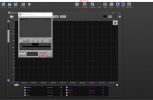little-endian
Member
- Joined
- Apr 16, 2023
- Messages
- 54
- Likes
- 47
If I remember correctly, Syntrillium Cool Edit Pro / Adobe Audition can analyse a tracks' minimum and maximum level. However, it is questionable that this will tell you the "real dynamic range" of a musical piece then. What if the noise floor is low but the majority of the content is squashed together?
Where the DR meter definitely shows its shortcomings, is movies however, as there, the macro dynamic range is apparent while sequences of loud crushing may result in rather low numbers.
Where the DR meter definitely shows its shortcomings, is movies however, as there, the macro dynamic range is apparent while sequences of loud crushing may result in rather low numbers.

